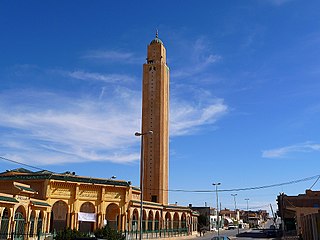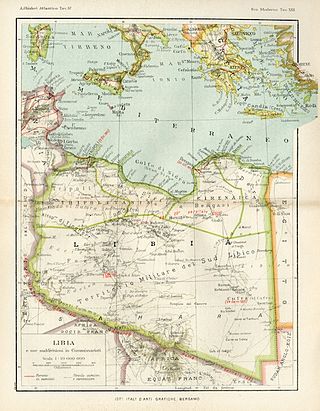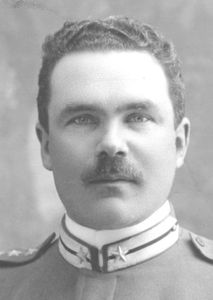Related Research Articles

The German Africa Corps, commonly known as Afrika Korps, was the German expeditionary force in Africa during the North African campaign of World War II. First sent as a holding force to shore up the Italian defense of its African colonies, the formation fought on in Africa, under various appellations, from March 1941 until its surrender in May 1943. The unit's best known commander was Field Marshal Erwin Rommel.

Internment is the imprisonment of people, commonly in large groups, without charges or intent to file charges. The term is especially used for the confinement "of enemy citizens in wartime or of terrorism suspects". Thus, while it can simply mean imprisonment, it tends to refer to preventive confinement rather than confinement after having been convicted of some crime. Use of these terms is subject to debate and political sensitivities. The word internment is also occasionally used to describe a neutral country's practice of detaining belligerent armed forces and equipment on its territory during times of war, under the Hague Convention of 1907.

Italian war crimes have mainly been associated with the Kingdom of Italy, Fascist Italy and the Italian Social Republic starting from the Italo-Turkish War then to Pacification of Libya, the Second Italo-Ethiopian War, the Spanish Civil War, and World War II.

The Italian colonizationof Libya began in 1911 and it lasted until 1943. The country, which was previously an Ottoman possession, was occupied by Italy in 1911 after the Italo-Turkish War, which resulted in the establishment of two colonies: Italian Tripolitania and Italian Cyrenaica. In 1934, the two colonies were merged into one colony which was named the colony of Italian Libya. In 1937, this colony was divided into four provinces, and in 1939, the coastal provinces became a part of metropolitan Italy as the Fourth Shore. The colonization lasted until Libya's occupation by Allied forces in 1943, but it was not until the 1947 Paris Peace Treaty that Italy officially renounced all of its claims to Libya's territory.

Libya was a colony of Italy located in North Africa, in what is now modern Libya, between 1934 and 1943. It was formed from the unification of the colonies of Cyrenaica and Tripolitania, which had been Italian possessions since 1911.

Jadu or Gado is a mountain town in western Libya (Tripolitania), formerly in the Jabal al Gharbi District. Before the 2007 reorganization, and after 2015 it was part of Yafran District.

Italian Cyrenaica was an Italian colony, located in present-day eastern Libya, that existed from 1911 to 1934. It was part of the territory conquered from the Ottoman Empire during the Italo-Turkish War of 1911, alongside Italian Tripolitania.

Ajdabiya is a town in and capital of the Al Wahat District in northeastern Libya. It is some 150 kilometres (93 mi) south of Benghazi. From 2001 to 2007 it was part of and capital of the Ajdabiya District. The town is divided into three Basic People's Congresses: North Ajdabiya, West Ajdabiya and East Ajdabiya.
During the Italian colonization of Libya, the Kingdom of Italy operated several concentration camps. During World War II, Fascist Italy operated several concentration camps and forced labor camps for the local population of Libya.

Benghazi Province, or Provincia di Bengasi in Italian, was one of the provinces of Libya under Italian rule. It was established in 1937.

Giuseppe Tellera was a general in the Italian Army during World War II.
The 1st Libyan Division was an infantry division of the Royal Italian Army during World War II. It was commanded by general Luigi Sibille. The division took part in the Italian invasion of Egypt and was destroyed during the Battle of Sidi Barrani.

The Second Italo-Senussi War, also referred to as the Pacification of Libya, was a conflict that occurred during the Italian colonization of Libya between Italian military forces and indigenous rebels associated with the Senussi Order. The war lasted from 1923 until 1932, when the principal Senussi leader, Omar al-Mukhtar, was captured and executed. The Libyan genocide took place during and after the conflict.

Conditions worsened for the Jews of Libya after the passage of Italy's Manifesto of Race in 1938. Following the German intervention in 1941, some Jews were sent to camps in continental Europe, where those who survived stayed until the end of World War II.

The Soluch concentration camp was an Italian concentration camp in Suluq in the Italian colony of Libya during the Pacification of Libya that took place from 1928 to 1932. It was here that the famous Senussi anti-colonial rebel leader Omar Mukhtar was executed by hanging on 16 September 1931. The camp is recorded as having a population of 20,123 people.
The Marsa Brega concentration camp was an Italian concentration camp established in the village of Brega in the Italian colony of Libya during the Pacification of Libya that occurred from 1928 to 1932. The camp is recorded as having a population of 21,117 people.

The Sid Ahmed el Maghrun concentration camp was an Italian concentration camp established in El Magrun in the Italian colony of Libya during the Pacification of Libya that occurred from 1928 to 1932. The camp is recorded as having a population of 13,050 people.
The El Agheila concentration camp was an Italian concentration camp established in El Agheila in the Italian colony of Libya during the Pacification of Libya that occurred from 1928 to 1932. The camp is recorded as having a population of 10,900 people.
The Abyar concentration camp was an Italian concentration camp established in Abyar in the Italian colony of Libya during the Pacification of Libya that occurred from 1928 to 1932. The camp is recorded as having a population of 3,123 people.